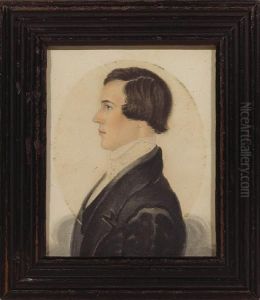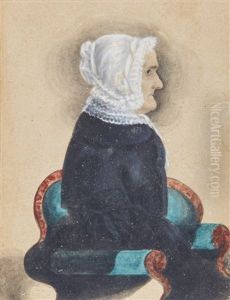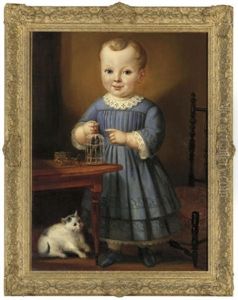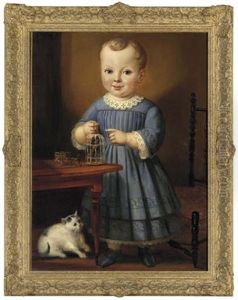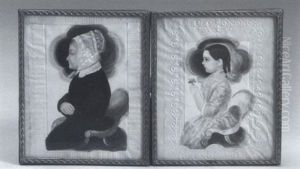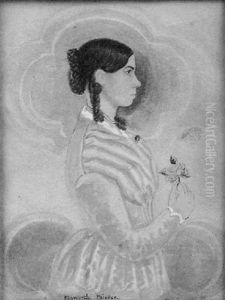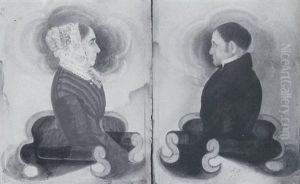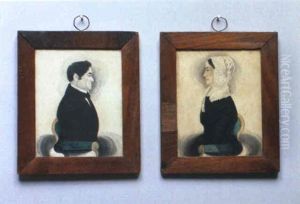James Sanford Ellsworth Paintings
James Sanford Ellsworth was an American folk artist, primarily known for his work as a portraitist in the early to mid-19th century. Born in 1802 in Windsor, Connecticut, Ellsworth did not receive formal art training but is remembered for his itinerant career painting portraits in a naive style, capturing the likenesses of middle-class Americans during the pre-photography era.
Ellsworth's artistic career may seem somewhat obscure when compared to the academically trained artists of his time, but he is considered an important figure in the genre of American folk art. His portraits are characterized by their flat areas of color, lack of perspective, and attention to detail in clothing and jewelry, which offer a glimpse into the fashions and domestic lives of his era. His subjects often have stylized, almond-shaped eyes, and he frequently used a limited color palette. This simplicity gives his work a particular charm and directness that was well suited to his clientele, who were typically not wealthy enough to commission work from the more renowned portraitists of the day.
Ellsworth traveled throughout the northeastern United States, particularly New York, Ohio, and Pennsylvania, where he would stay in a town long enough to paint the portraits of those interested. This itinerant lifestyle was common among folk artists of the period, as they would often follow patterns of economic migration and settle temporarily in burgeoning communities.
In terms of his personal life, little is known beyond his profession. Records of his movements are often only traceable through the portraits he left behind and occasional advertisements in local newspapers offering his services. His legacy rests on the body of work that he produced, which provides valuable insight into American folk art and the society of his time.
James Sanford Ellsworth passed away in 1873. Today, his works are held in various art collections, both private and public, including institutions dedicated to the preservation and study of American folk art. They continue to be studied and appreciated for their historical value and their unique aesthetic, which captures the essence of an era when the United States was still a young nation, and its cultural identity was in a formative stage.
